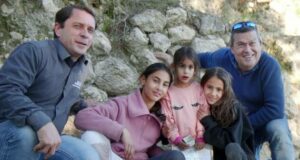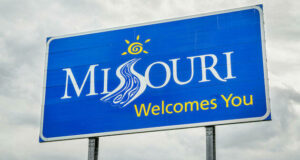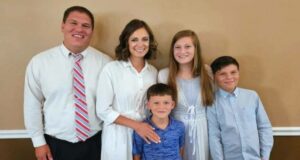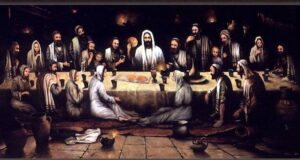Palestinian leader Mahmoud Abbas, in his now notorious speech at the United Nations on May 15, absurdly denied there was any proof of a Jewish link to the Temple Mount. In doing so, he again ignored the overwhelming archeological, documentary and historical evidence of the Jewish Temples.
Documentary evidence for the Temple includes the Old and New Testaments, the Mishnah and Midrash, and the writings of first-century Jewish historian Josephus. There are also many non-Jewish historical writings and documentary sources describing the Temples.
A partial list includes:
- 4th century BCE, Menander, a Greek historian.
- 4th century BCE, Hecataeus of Abdera, a Greek historian.
- 3rd century BCE, Berossus of Babylon.
- 3rd-2nd century BCE, Aristeas, a Greek official in the court of Ptolemy II, a Macedonian king of Egypt.
- 1st century BCE, Cicero, a Roman statesman.
- Circa 1st century CE, the Edict of Augustus.
- 1st century CE, Strabo, a Greek geographer.
- 1st century, Tacitus, a Roman historian.
- 1st century, the Arch of Titus.
- 1st century, Plutarch, a Greek historian.
- 2nd century, Cassius Dio, a Roman historian.
- 3rd century, Eusebius, a Greek Christian historian and Bishop of Caesarea.
- More than a dozen Islamic hadiths.
- 9th century, Muhammad ibn Jair Al-Tabari.
- 10th-century geographer and Jerusalem resident Muhammad ibn Ahmad Shams al-Din al-Muqaddasi.
- 11th century, Abu Bakr Muhammad Ahmad al-Wasiti.
- 12th-century geographer Muhamad al-Idrisi.
- 12th-century geographer Yaqut al Hamawi.
- 13th-century theologian Ahmad ibn Taymiyyah.
- 14th-century historian Abd al-Rahman ibn Khaldun.
- 15th-century historian Mujir al-Din.
- 15th-century polymath Jalal al-Din al-Suyuti.
There is also a substantial and growing body of archeological evidence of the presence of the Jewish Temples, including the following:
- 8th century BCE, Hezekiah stone tablet inscription.
- 8th century BCE, Isaiah Seal.
- 8th century BCE, King Hezekiah Seal.
- Temple Warning Inscriptions.
- Beit Hatekia Inscription referencing the blowing of trumpets on the Mount to announce the Sabbath, holidays and certain rituals.
- The lower course of the Eastern Wall of the Temple Mount, north and south of the Golden Gates, from the First Temple period.
- The High Priest’s golden bell, dated to the Second Temple period.
- The Herodian Stones, comprising the retaining wall of the Temple Mount, including the extensive portions below the present ground level, which can be seen at the Museum of the Western Wall.
- Herodian architecture and art, including in the entry halls of the Double Gate, located under the Al-Aqsa mosque structure. This was a part of what is known as the Hulda Gates.
- A water cistern at the southeast corner of the Temple Mount platform near Robinson’s Arch, dated to the First Temple period.
- Seals and pottery shards dating to the time of King Solomon (10th to ninth centuries BCE) and the First Temple period. These include seals inscribed with “Immer,” the name of a well-known priestly family at the time.
- Silver half-shekel coins from the Second Temple period.
- Wooden beams dating to the First and Second Temple periods.
- Second Temple-era mikvahs.
- Remains of a defensive wall, dating back approximately 3,000 years to King Solomon’s reign.
- The Pilgrimage Road, built by King Herod to ascend from the Pool of Siloam.
The ninth-century Muslim historian Al-Tabari gave an intimate and detailed account of Omar’s decision not to place a mosque on the site of the Jewish Temple and, instead, to locate the Al-Aqsa mosque outside of the Temple precincts. Ka’ab, a seventh-century Yemenite Jew who converted to Islam, and a number of other Jews, showed Omar where the Second Temple had been located. Omar then asked Ka’ab where he should establish a place of prayer.
Ka’ab answered: “By the rock,” known in Hebrew as the Even Shetiyah (Foundation Stone). Omar replied that Ka’ab was still following Judaism, noting that he had noticed Ka’ab removed his shoes when they ascended to the Mount. Omar said he would not establish a mosque by the Rock, but rather facing towards Mecca and the Ka’aba.
Muthir al-Ghiram, a 14th-century Arab historian of Islamic traditions, provided a similar account of Omar’s decision not to locate a mosque on the Foundation Stone. Like Al-Tabari, al-Ghiram emphasized Omar’s intention to separate the Muslim prayer site and rituals from those holy to the Jews. Abu Bakr Muhammad ibn Ahmad al-Wasiti, an 11th-century preacher in the Al-Aqsa mosque, also reported that the Dome of the Rock was not used as a mosque.
Muslim scholars like eighth-century Abd al-Rahman and 13th to 14th centuries Ibn Taymiyya and Ibn Qayyim al-Jawziyya rejected the idea that Islamic tradition attributes any sanctity to the Temple Mount for Muslims. Al-Jawziyya denied the holiness of the Sakhrah (Foundation Stone in Arabic), saying all traditions to the contrary are false. The Foundation Stone, he said, is the direction of prayer for Jews and holy to them like Shabbat.
In more modern times, the Waqf’s own “A Brief Guide to Al-Haram Al-Sharif, Jerusalem,” published in 1925, explicitly stated with reference to the Temple Mount: “Its identity with the site of Solomon’s Temple is beyond dispute.”
It added: “This, too, is the spot, according to the universal belief, on which ‘David built there an Altar unto the Lord, and offered burnt offerings and peace offerings.’ ” In other words, the Waqf’s own “Guide” admitted that the Jewish connection to Jerusalem and the Temple Mount is indisputable.
Criticizing Abbas’s speech is not enough. His blatant antisemitic rhetoric on the world stage at the United Nations is immoral and inexcusable. It is long past time for the United States to end its funding of the Palestinian Authority.
–By Farley Weiss and Leondard Grunstein
 Metro Voice News Celebrating Faith, Family & Community
Metro Voice News Celebrating Faith, Family & Community








